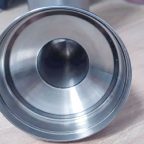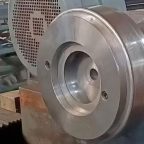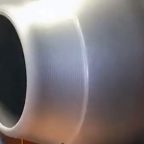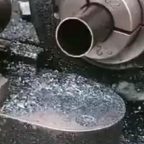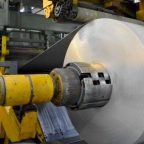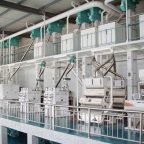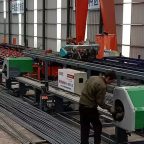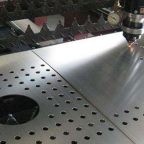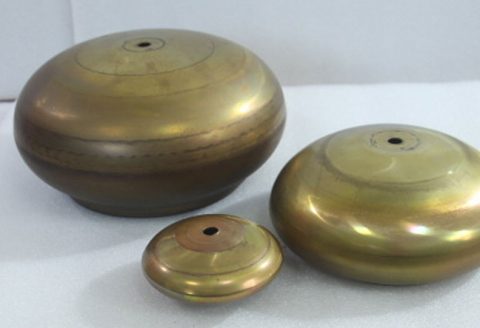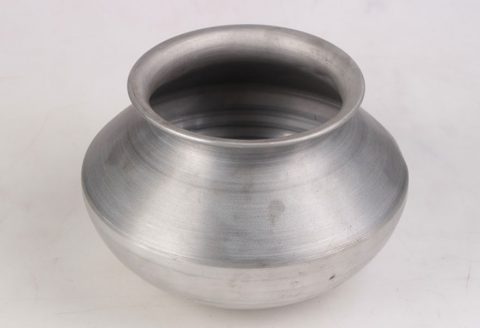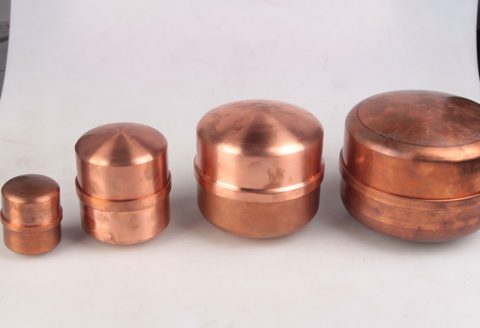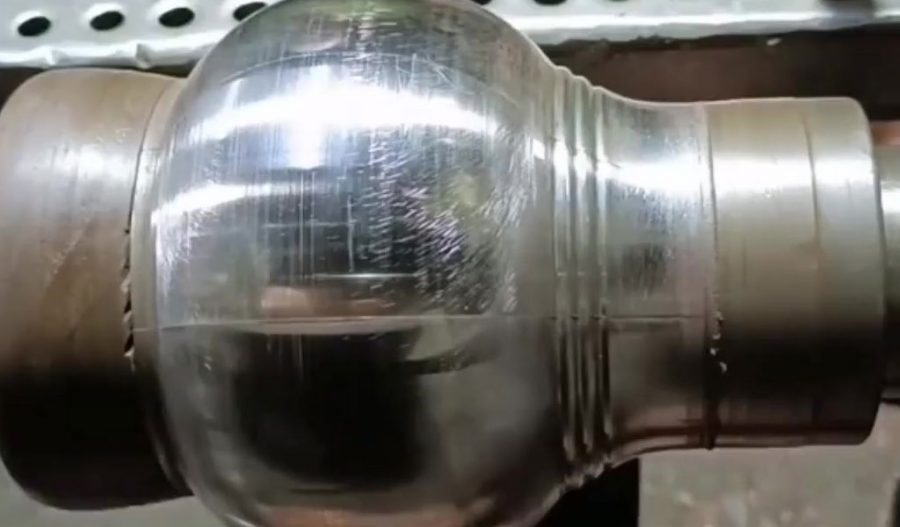
The spinning industry, a cornerstone of textile manufacturing, transforms raw fibers into yarns through complex mechanical processes. With the advent of Industry 4.0, the integration of smart sensors and the Internet of Things (IoT) has revolutionized this sector, enhancing efficiency, quality, and sustainability. Smart sensors, characterized by their ability to collect, process, and transmit data autonomously, combined with IoT’s networked connectivity, enable real-time monitoring, predictive maintenance, and data-driven decision-making. This article explores the multifaceted applications of these technologies in the spinning industry, detailing their technical underpinnings, operational impacts, and future potential. It examines their role in process optimization, quality control, energy management, supply chain integration, and worker safety, supported by comparative tables and case studies.
Historical Context and Technological Evolution
The spinning industry has evolved significantly since the Industrial Revolution, when mechanized spinning frames like the spinning jenny and water frame replaced manual labor. By the 20th century, automation introduced ring spinning, open-end spinning, and air-jet spinning, improving productivity but still relying on manual oversight. The limitations of traditional systems—such as inconsistent quality, high downtime, and energy inefficiency—prompted the adoption of digital technologies in the 21st century.
The emergence of Industry 4.0, characterized by cyber-physical systems, big data, and IoT, marked a paradigm shift. Smart sensors, equipped with microprocessors and wireless communication, became integral to industrial IoT (IIoT), enabling seamless data exchange across machines, systems, and supply chains. In spinning, these technologies addressed longstanding challenges by providing real-time insights into machine performance, yarn quality, and environmental conditions. The transition from analog to digital systems mirrors broader trends in manufacturing, where connectivity and intelligence drive competitiveness.
Technical Foundations of Smart Sensors and IoT
Smart Sensors: Definition and Components
A smart sensor is a device that integrates a sensing element, a microprocessor, and communication capabilities to collect, process, and transmit data. Unlike traditional sensors, which merely convert physical variables into electrical signals, smart sensors perform onboard data processing, such as filtering noise or normalizing data, before transmission. Key components include:
- Sensing Element: Detects physical parameters like temperature, humidity, vibration, or tension.
- Microprocessor: Processes raw data, applying algorithms for calibration or anomaly detection.
- Communication Module: Enables wired (e.g., Ethernet) or wireless (e.g., Wi-Fi, Bluetooth, Zigbee) data transmission.
- Power Management: Incorporates batteries or energy harvesting for sustained operation.
In spinning, smart sensors monitor parameters critical to yarn production, such as spindle speed, fiber tension, and ambient conditions, ensuring optimal performance.
IoT Architecture in Industrial Applications
IoT connects smart sensors to a networked ecosystem, facilitating data exchange between devices, cloud platforms, and enterprise systems. The architecture comprises three layers:
- Perception Layer: Smart sensors and actuators collect data from spinning machines and the environment.
- Network Layer: Transmits data via protocols like MQTT, CoAP, or HTTP, using 4G/5G, Wi-Fi, or LPWAN (e.g., LoRaWAN).
- Application Layer: Processes data in cloud or edge platforms, enabling analytics, visualization, and control.
In spinning mills, IoT integrates sensors with spinning frames, environmental controls, and supply chain systems, creating a cohesive digital infrastructure.
Relevance to Spinning
Spinning involves multiple stages—fiber preparation, drafting, twisting, and winding—each susceptible to variations affecting yarn quality. Smart sensors provide granular data on machine health, fiber properties, and process stability, while IoT enables centralized monitoring and control. This synergy reduces defects, optimizes resource use, and enhances traceability, aligning with Industry 4.0’s emphasis on automation and intelligence.
Applications in Spinning Processes
Fiber Preparation and Quality Monitoring
Fiber preparation, including carding and combing, determines yarn uniformity and strength. Smart sensors monitor fiber characteristics, such as staple length, fineness, and moisture content, using technologies like near-infrared (NIR) spectroscopy and capacitive sensing. IoT platforms aggregate this data to adjust machine settings in real time, minimizing variations.
For example, a smart sensor on a carding machine detects fiber neps (small fiber entanglements) and transmits data to a cloud-based analytics platform. Machine learning algorithms analyze trends, recommending adjustments to cylinder speed or doffer settings. This reduces neps, improving yarn evenness (measured as CV%, coefficient of variation).
Table 1: Comparison of Fiber Monitoring Technologies
| Technology | Parameter Measured | Accuracy (% Error) | Data Processing | IoT Integration | Cost (USD) |
|---|---|---|---|---|---|
| NIR Spectroscopy | Fiber fineness, moisture | <2% | Onboard | High | 5,000–10,000 |
| Capacitive Sensing | Fiber density, moisture | <3% | External | Moderate | 1,000–3,000 |
| Optical Sensing | Nep count, trash content | <5% | Onboard | High | 3,000–7,000 |
| Manual Testing | All parameters | <10% | None | None | 100–500 |
Spinning Process Optimization
The core spinning process—ring, open-end, or air-jet spinning—relies on precise control of mechanical components. Smart sensors monitor spindle speed, rotor vibration, and traveler wear, detecting anomalies that cause yarn breaks or uneven twisting. IoT enables predictive maintenance, scheduling repairs before failures occur.
For instance, vibration sensors on ring spinning frames detect imbalances caused by worn bearings. IoT systems analyze vibration patterns, predicting failure within 95% accuracy, reducing downtime by up to 30%. Real-time feedback also adjusts spindle speed to optimize twist per inch (TPI), ensuring consistent yarn strength.
Table 2: Smart Sensors in Spinning Process
| Sensor Type | Application | Measurement Range | Response Time | IoT Protocol | Failure Detection Rate |
|---|---|---|---|---|---|
| Vibration Sensor | Spindle/rotor monitoring | 0–100 Hz | <1 ms | MQTT | 95% |
| Tension Sensor | Yarn tension control | 0–500 cN | <2 ms | CoAP | 90% |
| Speed Sensor | Spindle speed | 0–150,000 RPM | <1 ms | HTTP | 98% |
| Temperature Sensor | Machine heat monitoring | 0–150°C | <5 ms | Zigbee | 85% |
Winding and Quality Control
Winding consolidates yarn onto packages, where defects like slubs or thin places can compromise quality. Smart sensors, such as optical or laser-based yarn clearers, detect imperfections at speeds up to 2,000 m/min. IoT platforms log defect data, enabling traceability to specific spindles or lots, facilitating root-cause analysis.
For example, a laser clearer identifies a slub (a thick yarn segment) and signals the winder to cut and splice the yarn. IoT systems correlate slub frequency with upstream processes, identifying issues like improper drafting. This reduces defects by 25–40%, improving yarn grades (e.g., from B to A in Uster classification).
Table 3: Yarn Defect Detection Technologies
| Technology | Defect Types Detected | Detection Speed (m/min) | Accuracy (%) | IoT Integration | Cost (USD) |
|---|---|---|---|---|---|
| Laser Clearer | Slubs, thin places, neps | 2,000 | 98% | High | 10,000–20,000 |
| Optical Clearer | Slubs, foreign fibers | 1,500 | 95% | High | 8,000–15,000 |
| Capacitive Clearer | Thick/thin places | 1,200 | 90% | Moderate | 5,000–10,000 |
| Manual Inspection | All defects | 100 | 80% | None | 200–1,000 |
Energy Management and Sustainability
Spinning mills consume significant energy, primarily for driving spindles and maintaining climate control. Smart sensors monitor energy usage, identifying inefficiencies like motor overloading or excessive HVAC operation. IoT platforms optimize energy consumption by adjusting machine schedules and environmental settings based on real-time demand.
For instance, power sensors on ring spinning frames detect peak loads, while IoT systems shift non-critical tasks to off-peak hours, reducing costs by 15–20%. Humidity and temperature sensors ensure optimal conditions (e.g., 50–60% RH, 25–30°C) for cotton spinning, minimizing fiber breakage and energy waste in humidifiers.
Table 4: Energy Monitoring Solutions
| Solution | Parameters Monitored | Energy Savings (%) | Response Time | IoT Integration | Cost (USD) |
|---|---|---|---|---|---|
| Power Sensors | Motor load, consumption | 10–20% | <10 ms | High | 500–2,000 |
| Environmental Sensors | Temperature, humidity | 5–15% | <20 ms | High | 300–1,500 |
| Smart Meters | Total energy usage | 8–12% | <50 ms | Moderate | 1,000–5,000 |
| Manual Monitoring | None | 0% | N/A | None | 100–500 |
Sustainability benefits include reduced carbon footprints and waste. IoT-enabled recycling systems track fiber waste, optimizing reuse in lower-grade yarns, aligning with circular economy principles.
Supply Chain Integration and Traceability
IoT enhances supply chain transparency by connecting spinning mills with fiber suppliers, fabric manufacturers, and retailers. Smart sensors on bales track origin, moisture, and quality, ensuring compliance with standards like Better Cotton Initiative (BCI). RFID tags and IoT platforms provide end-to-end traceability, reducing fraud and improving inventory management.
For example, an IoT system logs bale data at the ginning stage, monitors processing in the spinning mill, and shares quality reports with downstream partners. This reduces disputes by 50% and improves delivery times by 20%, as real-time data enables just-in-time inventory.
Table 5: Supply Chain Technologies
| Technology | Application | Traceability Level | Data Update Frequency | IoT Integration | Cost (USD) |
|---|---|---|---|---|---|
| RFID Tags | Bale/yarn tracking | High | Real-time | High | 0.5–2 per tag |
| Smart Sensors | Fiber quality monitoring | High | Every 10 s | High | 500–2,000 |
| Barcode Systems | Inventory tracking | Moderate | Manual | Low | 0.1–0.5 per tag |
| Manual Records | None | Low | Daily | None | 50–200 |
Worker Safety and Ergonomics
Spinning mills pose risks like dust exposure, noise, and machine-related injuries. Smart sensors enhance safety by monitoring air quality, noise levels, and worker movements. IoT systems alert supervisors to hazards, ensuring compliance with OSHA standards.
For instance, wearable sensors detect dust levels exceeding 3 mg/m³, prompting ventilation adjustments. Motion sensors on workers’ vests identify repetitive strain risks, recommending ergonomic breaks. These measures reduce accidents by 30% and improve worker retention.
Table 6: Safety Monitoring Solutions
| Solution | Parameter Monitored | Detection Threshold | Response Time | IoT Integration | Cost (USD) |
|---|---|---|---|---|---|
| Air Quality Sensor | Dust, VOCs | 0.1–10 mg/m³ | <30 s | High | 200–1,000 |
| Noise Sensor | Sound levels | 85–140 dB | <20 s | High | 150–800 |
| Wearable Motion Sensor | Ergonomic risks | Acceleration >2 m/s² | <10 s | High | 50–200 |
| Manual Checks | Visual inspection | N/A | Hours | None | 100–500 |
Case Studies and Industry Adoption
Case Study 1: Rieter’s SPIDERweb System
Rieter, a leading spinning equipment manufacturer, developed SPIDERweb, an IoT-enabled monitoring system. Smart sensors on ring and rotor spinning machines collect data on production, quality, and energy. The system integrates with cloud analytics, providing dashboards for real-time insights. A Turkish mill using SPIDERweb reduced yarn defects by 35% and energy costs by 18% within six months.
Case Study 2: Arvind Limited’s IoT Implementation
Arvind Limited, an Indian textile conglomerate, deployed IoT sensors across its spinning mills to monitor fiber quality and machine performance. By integrating data with SAP’s ERP system, Arvind achieved 25% faster inventory turnover and 15% lower maintenance costs. The system’s predictive analytics prevented 80% of machine failures.
Global Adoption Trends
Adoption varies by region. Developed markets (e.g., Germany, Japan) lead due to high capital and skilled labor, with 60% of mills using IoT by 2023. Emerging markets (e.g., India, Bangladesh) lag, with 30% adoption, constrained by costs and infrastructure. However, 5G and affordable sensors are accelerating uptake, with global IoT spending in textiles projected to reach $5 billion by 2030.
Challenges and Limitations
Technical Challenges
- Data Security: IoT networks are vulnerable to cyberattacks, risking intellectual property theft. Encryption and blockchain mitigate but increase costs.
- Interoperability: Diverse sensor protocols (e.g., MQTT vs. OPC UA) hinder integration. Standardized platforms like MTConnect address this partially.
- Scalability: Large mills with thousands of sensors face data overload, requiring robust edge computing.
Economic and Social Barriers
- High Costs: Initial investments ($50,000–$500,000) deter small mills. ROI typically takes 2–5 years.
- Skill Gaps: Workers need training in IoT and data analytics, a challenge in labor-intensive regions.
- Resistance to Change: Traditional mills resist digitalization, fearing job losses or complexity.
Environmental and Ethical Concerns
IoT systems consume energy for data processing and connectivity, offsetting some sustainability gains. Ethical issues include worker surveillance via wearables, raising privacy concerns. Transparent policies and low-power protocols (e.g., LoRaWAN) are essential.
Future Prospects and Innovations
Emerging Technologies
- 5G Connectivity: With speeds up to 20 Gbps, 5G enables real-time control of spinning machines, reducing latency to <1 ms.
- AI and Machine Learning: Advanced algorithms predict yarn quality with 99% accuracy, optimizing blends and reducing waste.
- Smart Textiles: Sensors embedded in yarns monitor production and end-use performance, creating feedback loops for manufacturers.
Circular Economy Integration
IoT supports recycling by tracking fiber origins and properties, enabling closed-loop systems. For example, sensors identify recyclable cotton, reducing virgin fiber use by 20%. Blockchain enhances transparency, ensuring ethical sourcing.
Policy and Standardization
Governments are promoting IoT through incentives (e.g., India’s Digital India initiative) and standards (e.g., ISO 20900 for IIoT). These efforts lower barriers, fostering global adoption.
Conclusion
Smart sensors and IoT have transformed the spinning industry, enabling unprecedented levels of efficiency, quality, and sustainability. From fiber preparation to supply chain management, these technologies provide actionable insights, reduce costs, and enhance competitiveness. Despite challenges like cost and security, ongoing innovations—5G, AI, and smart textiles—promise further advancements. As adoption grows, the spinning industry stands poised to lead in the era of Industry 4.0, balancing profitability with environmental and social responsibility.
Maximize Tooling and CNC Metal Spinning Capabilities.
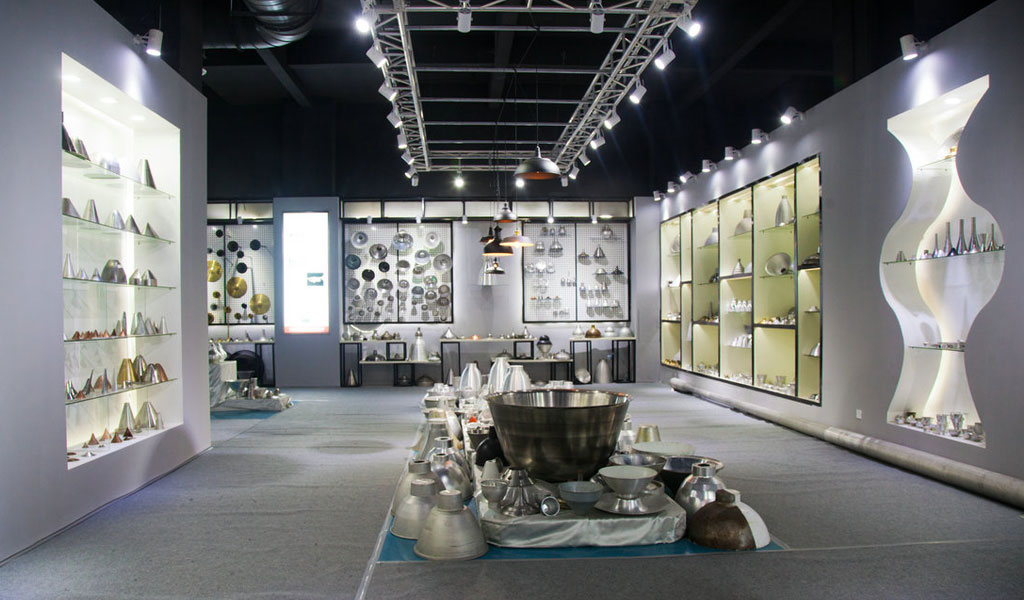
At BE-CU China Metal Spinning company, we make the most of our equipment while monitoring signs of excess wear and stress. In addition, we look into newer, modern equipment and invest in those that can support or increase our manufacturing capabilities. Our team is very mindful of our machines and tools, so we also routinely maintain them to ensure they don’t negatively impact your part’s quality and productivity.
Talk to us today about making a rapid prototype with our CNC metal spinning service. Get a direct quote by chatting with us here or request a free project review.
BE-CU China CNC Metal Spinning service include : CNC Metal Spinning,Metal Spinning Die,Laser Cutting, Tank Heads Spinning,Metal Hemispheres Spinning,Metal Cones Spinning,Metal Dish-Shaped Spinning,Metal Trumpet Spinning,Metal Venturi Spinning,Aluminum Spinning Products,Stainless Steel Spinning Products,Copper Spinning Products,Brass Spinning Products,Steel Spinning Product,Metal Spinnin LED Reflector,Metal Spinning Pressure Vessel,
